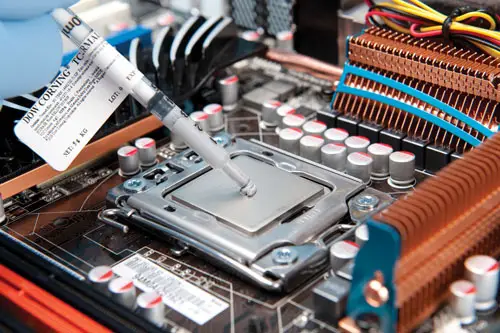How to apply cooling paste on processor

My PC is heating too much and some suggested me to apply cooling paste on the processor to resolve this issue, so I bought a cooling paste, but I didn’t know how to apply the paste on the processor correctly. Please help me in this little task I shall be very thankful to you.













